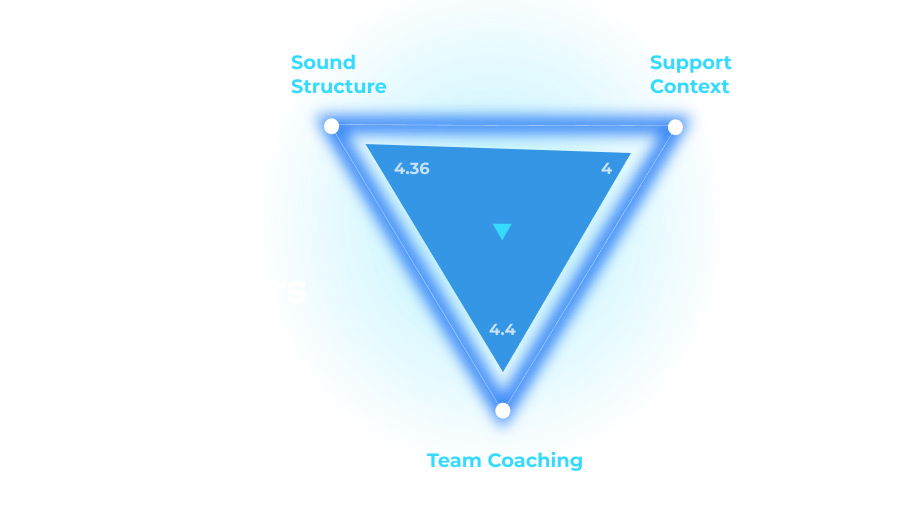ACCELERATE YOUR TEAM’S DEVELOPMENT: CREATE MEANINGFUL NORMS.
By Ruth Wageman
My colleagues from the McLelland Center at Hay Group, Richard Hackman at Harvard, and I (then faculty at Dartmouth) spent a couple of years studying 127 senior leadership teams from organizations all over the world. These teams led complex enterprises, from massive oil and gas companies to consumer goods firms, to major banks, government agencies, food services businesses, and many more.
We wrote about our findings, and provided practical advice for senior leaders, in our book “Senior Leadership Teams: What it Takes to Make them Great” (Harvard Business School Press).
Two particular findings still really stand out for me: (1) less than a quarter of the teams were effective leadership teams, and (2) the single variable that most powerfully differentiated the outstanding leadership teams from the mediocre and poor ones was the presence of explicit norms of conduct.
The Importance of Norms in Leadership Teams
Let’s start with that second finding. Norms—sometimes called rules of engagement—are the agreements among team members about what behavior is expected, both what is desired and what is not OK. All teams have norms, for better or for worse (often for worse).
Sometimes, dysfunctional behavior can become the norm, when team members act in ways that are harmful to collective effectiveness, but no one confronts it. (I can remember many seminars in which faculty would turn up a little late, and no one said anything, and the speaker just waited for the last people to show…so the start time got pushed back to the point that eventually everyone came 10-15 minutes after the official start time).
Sources of Good Norms
Where do good norms come from? And what are good norms? In their paper on team norms, Connie Gersick and Richard Hackman note that norms can be imported from other groups and contexts, they can emerge as a pattern of learning about consequences of behavior—or the lack thereof– (as in the example above), or they can be explicitly named and agreed upon and managed.
Imported norms and implicit norms often are ill-suited to promote team effectiveness, the former because they may not suit the current circumstances and the latter because they don’t arise from thought and intentionality about having a great team.
The Shortcomings of Typical Norm-Setting Exercises
You have probably seen or even led many norm-generating exercises in teams, where a facilitator asks “what behaviors does this team want from its members?” and then captures a list of a dozen or so proposed rules: everyone participate, turn off the cell phones, show up on time.
Sometimes they go a little deeper, like assume good intent, balance advocacy and inquiry, stay curious and open minded. These are all potentially good behaviors, and they often have been learned from past experience about what gets in a team’s way and produces conflict and bad feelings.
But they most often just become a list on paper that never gets used.
Why Norms Don’t Get Used
When I see teams generate a product that doesn’t get used, it makes me ask: what is it that the users really needed? In the case of norms, I’ve come to realize that list doesn’t get used because it’s not about the behaviors that address the team’s most critical challenges when they try to achieve their collective purpose.
“Everyone participate” or “balance advocacy and inquiry” are good ideas…but they are irrelevant if the team’s biggest challenge is the lack of together-time to dig into big strategic questions. They are irrelevant if the problem is that everyone on the team makes unilateral decisions to prioritize other work ahead of this team.
A More Effective Approach to Establishing Norms
We have been working with a different practice for establishing norms. Once we have supported the leader and team to get the team’s Compelling Purpose in great shape, we help them identify a few mission-critical tasks to achieve together in the next work cycle, things that will seriously progress the team’s purpose.
We then use the Before Action Review cycle: What are our intended results? What have we learned is likely to prevent us from achieving them? What have we learned about what it takes to address those challenges? And THEREFORE: what are we committing to do differently to make sure we accomplish those intended results?
This kind of conversation enables a team to name the critical behaviors and work practices they really need to pull off what they just said they want to achieve. They name norms that really contribute to the work, not just politeness rules.
The Power of Reflection: After Action Reviews
And because the natural follow on to a Before Action Review is an After Action Review, they look hard at what made them successful or what got in the way…including failing to hold themselves accountable to their agreements.
I’ve been very inspired by how this simple but powerful learning structure accelerates a team’s development of disciplined, strategic work practices. Have you tried it with your team? Please share the results with us!

